Glen Plake: Evolution of a Rebel
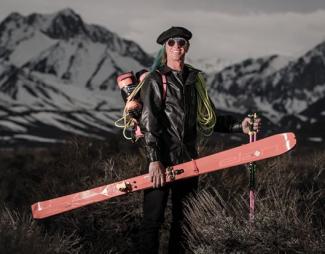
At 55, Hall of Famer Glen Plake is an enduring—and iconic—ambassador for the sport of skiing, its downhome roots and honoring its past.
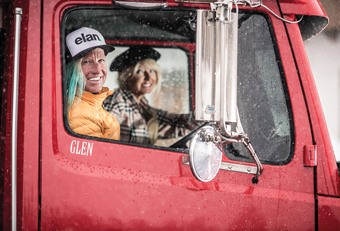
Today, our tech talk is about our smartphones, and balancing functionality with distraction. Namely, he’s seriously considering downgrading from his hand-me-down, first-generation iPhone 6 to a primitive iPhone 4. More distractions are not what he needs. As he ticks through all the jobs he’s juggling right now—everything above, plus plugging away at his mountain-guide certifications while living between Chamonix, Nevada and the back of his truck, he muses that the one thing he really needs is a clone. “I would definitely trade in my iPhone for that!”
At 55, Glen Plake is as relevant as ever to skiers, equally at ease and recognized on the streets of Paris (sans Mohawk) as in the parking lot of a podunk ski area in the American Midwest. To those who associate Plake with the loudmouth loose cannon who made his mark in Greg Stump’s 1988 film Blizzard of Aahhh’s, this down-to-earthiness might seem at odds. But anyone who has run across Plake in the past, say, quarter century knows that he is the consummate man of the people, driven chiefly by a pure love of skiing in all its forms. What makes him such an enduring and endearing icon? Some say humility, but Plake, speaking from his lakeside bunker/oasis in the Nevada desert, sees it slightly differently. “I think it is curiosity.”
THE WARM-UP
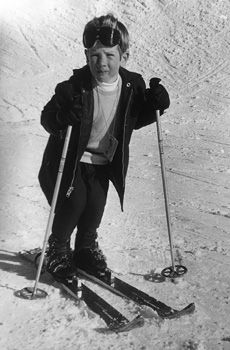
Born in Livermore, California, and raised in South Lake Tahoe, Glen Plake started skiing at Heavenly Valley at age three. Even while absorbing the technical (if not behavioral) discipline imparted by his Austrian coaches on the venerable Blue Angels ski team, he drew inspiration from beyond the boundaries.
He read about rebel Dick Buek in SKI magazine, watched in awe as Hermann Gollner threw his majestic Moebius flip in Ski the Outer Limits, joined the hedonistic Face Rats as they ripped through the bumps on Heavenly’s iconic Gunbarrel run, and appreciated the freedom of hiking for turns with his father wherever and whenever he pleased. Skiing hard, and partying harder, became Plake’s lifestyle, while his competitive focus moved from gates to moguls. With his layered Izod shirts and towering Mohawk, the up-and-coming icon was deemed “uncontrollable” at his high school, and despite proving his chops for the World Cup moguls team, did not take to the “Ken Doll” style confines of competitive bumping.
THE LAUNCH
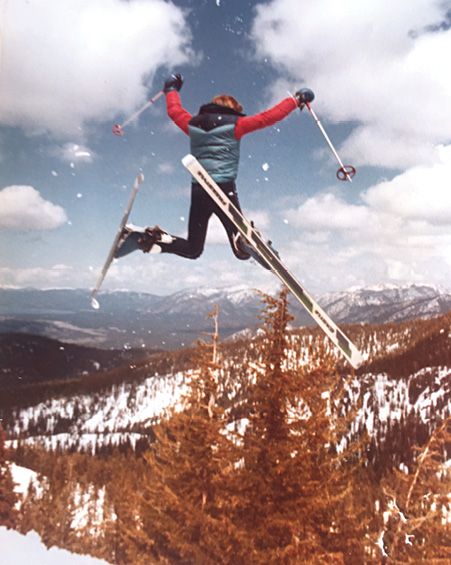
Despite the hype, Plake and his castmates were well aware that what they were doing was more hotdogging and cliff jumping than “extreme.” After the film, Plake stayed on in Chamonix, both to avoid his well-publicized legal issues at home and to start his true big-mountain education. After Stump paid his legal fees to return to the States and do promotional work for the film, Plake had his pick of films, appearances and sponsors.
By 1990–1991, Plake was all over the ski press—ads, cover shots, features—including the cover of SKI with the tagline, “Glen Plake: Hair Today, Gone Tomorrow?” The Extremely Different ad campaign for K2, juxtaposing Plake and his dyed Mohawk with straitlaced gold medalist Phil Mahre was an instant and coveted classic, and confirmation that times were changing in the world of ski hero worship. Plake went on building his reputation of pushing boundaries, both in the ski world—doing things like wielding his 16-pound helmet cam, with a WWII aircraft camera on one side and a huge battery on the other—and in the police blotters. The partying came to a crescendo in 1992 in Jackson Hole, Wyoming, when an après ski party landed him with three felonies. At that point, he knew it was time to clean up his act.
GROUNDED
By then he had met and married Kimberly Manuel, a Texas beauty queen, bump skier and off-roading devotee. Tim Petrick came to K2 from Olin in 1992, when Glen was a big part of the franchise. The two became and continue to be good friends. “Kimberly was instrumental in his transformation from mushroom-eating stoner to upstanding citizen,” Petrick explains.
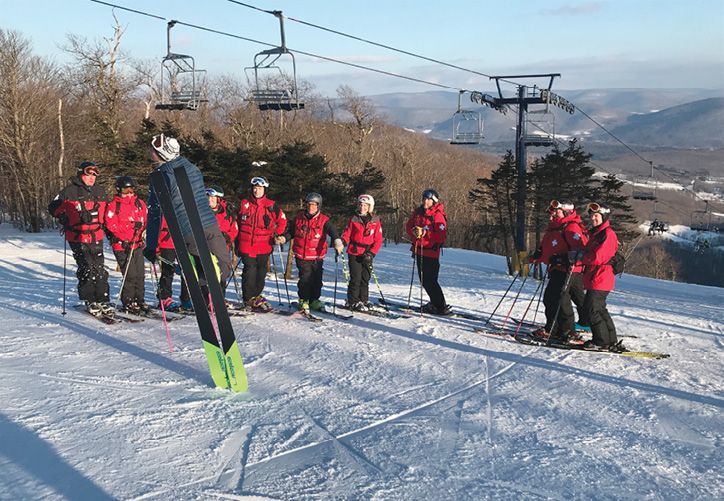
For their honeymoon in 1991, the Plakes decided to embark on a cross-country “Down Home Ski Tour,” making unannounced visits to little ski areas like the one in North Carolina where Kimberly had learned to ski on trips with her Texas church group. Plake was intrigued by meeting skiers who’d grown up at the tiny, unknown areas he’d never experienced, and mindful of the positive impact he could make. Race-car champ Richard Petty had once signed a hat for him and told him to “keep smiling and be nice to people.” The interaction and advice left a deep impression. “An autograph represents interaction with someone,” Plake explains. He wanted to sign autographs but also to ski with these people, on their home turf.
The initial “Down Home Tour” was a 68-day, 50-stop tour of ski areas across the country. These are areas, not resorts, and this distinction, Plake says, means everything. “Areas are where it all goes down.” As for resorts? “Golf and ski resorts is something that just trips me out. How the hell did that happen?”
Plake has described skiing as a “dumb hick sport at the end of a dirt road,” and his blue-collar sensibility appeals to skiers from West Virginia to Michigan to Iowa to Washington. “Every three years or so, I get a wild hair and feel like it’s time,” Plake explains, and when he does, he and Kimberly fire up the custom Freightliner, tricked out with diesel heaters, a full-sized bedroom, bath and kitchen, and a workshop with a separate barn door entrance. The Downhome Tour stokes his fan base and his soul. “It’s my way to say thanks and also my way to recharge. I have so much passion driven into my heart after the tour.”
PROFESSIONAL REBOOT
Soon after that first tour, Plake cut out all remaining party vices, but not the loud braying laugh and the gregarious spirit. As he put it in one of his notorious Plakeisms: “I realized there ain’t no skiing in jail at all, so I just quit [boozing].” As Petrick notes of the rebooted Plake, “You could not ask for a more professional athlete.” In the meantime, Plake was becoming more involved and accomplished in backcountry skiing and mountaineering, spending his winters in Chamonix, and eventually buying an apartment there.
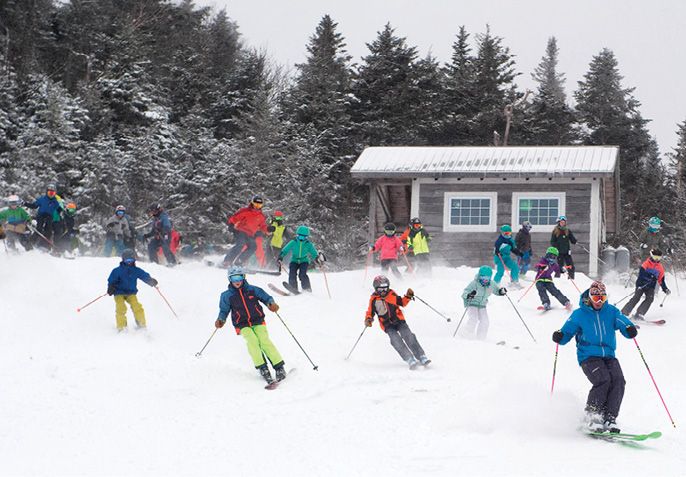
“Down Home Ski Tour” stops at Mad River Glen
in Vermont. Photo: Jeb Wallace-Brodeur
Spotty technology and excessive travel conspired in his next career move, in 2006, when he got a call from Elan. “The only reason I had not signed my K2 contract yet was because my fax was broken,” explains Plake. Elan offered him a generous five-year-deal, and the opportunity to get back into the factory “smelling the wood” and designing skis. K2 had gone through a lot of changes. The skis were made in China, not Vashon Island, and the family of athletes had largely dispersed. Still, Plake was attached to the legacy. “My career was so integrated into my lifestyle and personality. It was weird.” At the same time, when opportunity presents itself, Plake drops in. K2 had already let go of the Mahre brothers and Scot Schmidt, and Petrick had no intention of letting their highest-paid and most recognizable athlete go, but he could not come close to matching the offer.
Plake recently signed for another three years with Elan, and has been instrumental in designing both the Amphibio—a carver that is, literally, twisted at top and tail to make it easier to ski in a wide variety of conditions—and now the lightweight Ripstick, featuring a wood core, carbon fiber tubes and “a chassis everybody likes.” His in-bounds quiver is now, “Pretty much Ripstick 106 all the time.”
“IF I’M INVOLVED, I’LL EVOLVE”
“It’s a cliché I’ve used over and over, in skiing, off road, waterskiing. If you dive into the process, there will be some sort of an evolution.”
This philosophy drives Plake’s limitless curiosity, and his enduring relevance. In September 2009, Plake was named spokesperson of Learn to Ski and Snowboard Month (LSSM), and yet he often found himself in teaching situations for which he was unqualified. “I was supposed to teach Hoda from the Today show how to ski and I had no idea.” That same day he contacted PSIA, then hit the books and showed up at Breckenridge with 250 new hires for his Level 1 certification. By 2011 he had earned his Level 3, and done so in several divisions—Rocky, West, Central, Northwest and East. “That freedom to roam was the only shortcut they ever gave me,” says Plake, who is working with the organization to incorporate that flexibility—which he sees as vital to attracting the younger generation—into the certification process.
Kimberly earned her Level 3 certification as well, on her own schedule. “She’s the warden,” Plake laughs, adding that she is also his biggest supporter and best friend. “I don’t know two people that spend as much time together.” That includes a lot of time on snow, as well as on water and dirt. Kimberly got her first dirt bike at age seven and, like Glen, is a huge fan of off-roading. They also enjoy their time away from each other, like when Glen is on mountaineering expeditions for up to six weeks at a time. Plake’s mountaineering exploits include first descents close to his home bases in the Sierra Nevada and Europe, and as far as Japan, India and South America.
On one such expedition, in 2012, while attempting to ski the world’s eighth-highest mountain, Nepal’s Manaslu, without oxygen, tragedy struck. While in their tents, Plake and his climbing partners Gregory Costa and Remy Lecluse were hit by an avalanche. Costa and LeCluse were swept away, and were among the 12 people who died in the avalanche. Miracuously, Plake was unhurt.
Later, when Plake learned of a French project to instruct aspiring mountain guides in Nepal with some ski skills, he jumped in, teaching 12 kids to ski. But in order for those kids to become instructors, and teach their friends in turn, Plake would need to become a PSIA examiner. “Everyone literally laughed and rolled their eyes,” recalls Plake. Again, he dove into the process of certifications, interviews and letters. In April 2019, “I got asked to be part of the secret society,” he laughs, with obvious pride.
NEVER BORING, NEVER BORED
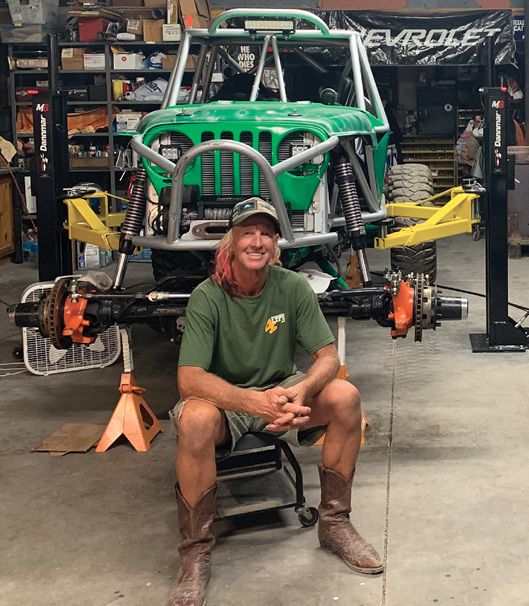
Petrick calls Plake “one of the most well-versed individuals I know in skiing,” and indeed, his knowledge of everything—from technique to history to equipment to resorts to consumers—is its own love letter to the sport. “Plus, he can do tip rolls and all the old ballet moves,” adds Petrick. “When you’re around him, you kind of feel like he does—like skiing is the coolest thing.”
A few winters back, when the snowpack was horrific in the Sierra Nevada, Plake ordered up slalom skis from Elan. “For 52 days in the lousiest winter ever, I skied slalom every day. There are so many beautiful facets of the sport—rails, touring, bumps, slalom, jumping—and none are more important than the other.” One thing he doesn’t like about skiing is “our ability to throw away trends so quickly. Other sports preserve their heritage.”
Case in point, the hang ten in surfing or the wheelie on a bike. “Wheelies never go out of fashion,” notes Plake. “But do a spread eagle or a daffy on skis and they laugh at you.” The slow dog noodle and the worm turn, as well as the technique needed to ski a 204-cm slalom ski, are all part of our heritage, worthy of celebrating and preserving. Plake pays homage to the past by creating and hosting events like the Glen Plake Hot Dog Tour and the Gunbarrel 25 Mogul Marathon, where participants try to lap Heavenly’s 1,800-vertical-foot iconic mogul run 25 times.
As Steve Casimiro wrote in “The Soul Man” (SKI, October 2000): “While there are skiers who’ve done more for the sport, there are none who’ve worked harder or spent more time in the trenches, none who’ve made their mark by touching thousands of skiers one at a time, eyeball to eyeball, ski to ski on a chairlift or bump field.” When he was inducted into the U.S. Ski and Snowboard Hall of Fame in 2010, Plake took the opportunity to advocate for a more diverse skill set in the ski racer-heavy HOF. Plake is indeed a master promoter, but as much for the sport and the individualism it cultivates, as for himself.
“I always grew up skiing with these wild go-for-it guys and girls, living life. They weren’t cookie cutter. They were nutcases. As my career came to fruition, they were all Perfect Peter. I hope I helped break that awful spiral,” he says. As he sees it, Blizzard of Aahhh’s didn’t break ground, but rather, held it. “It was a reminder of where we should be.”
Plake finished the 2019 ski season on the Fourth of July at Mammoth Mountain in California, where he has been Ski Ambassador (or, in Plakese, “Ambadassador”) since 2014, in his Liberty overalls, ripping bumps in the slush while chatting up the crowd. And that is always cool. 
Edith Thys Morgan is a blogger, author and frequent contributor to Skiing History. You can learn more about her at racerex.com.
Unless otherwise credited, photos courtesy Glen and Kimberly Plake